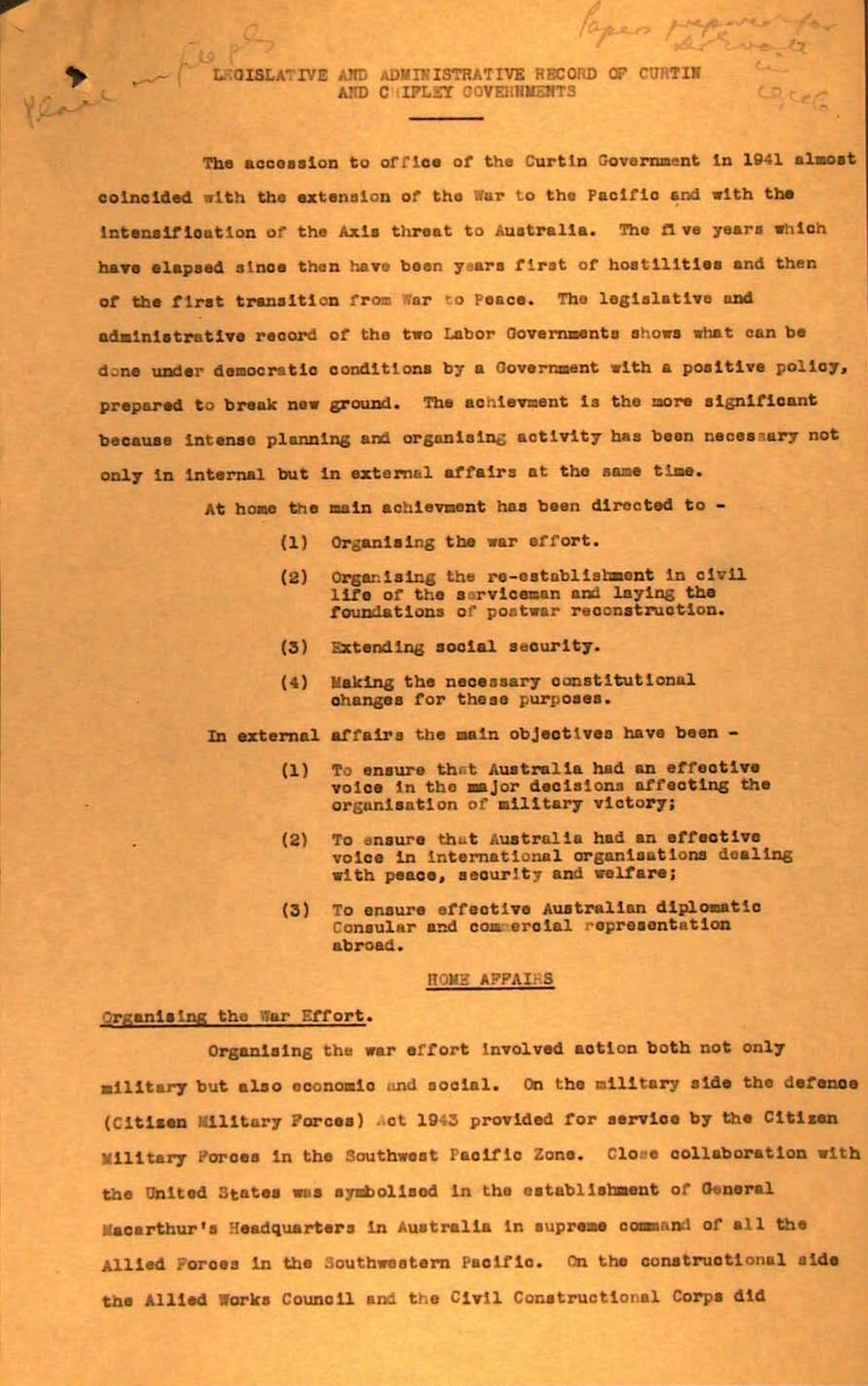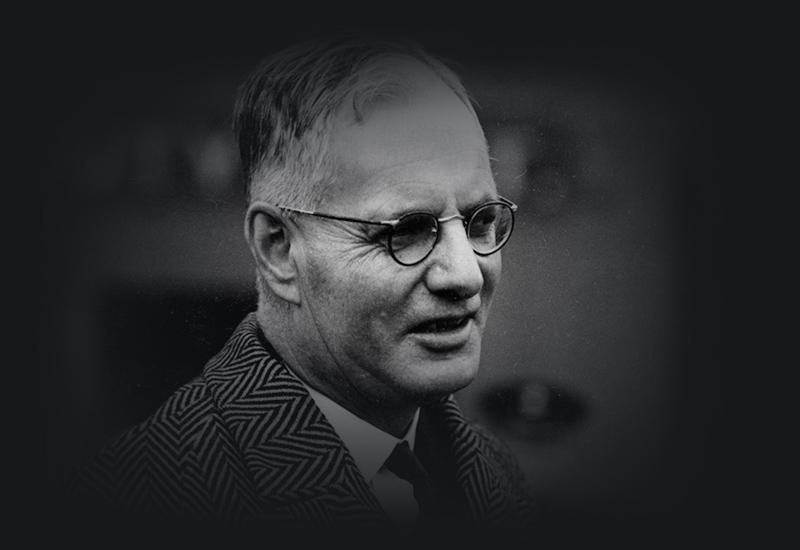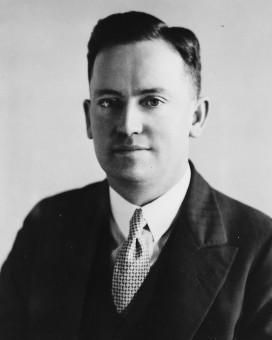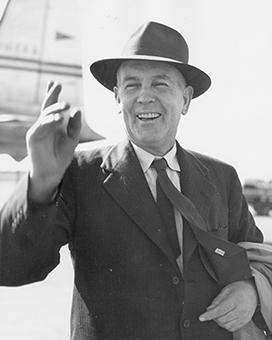On 6 July 1945, John Curtin’s body was laid in state in King’s Hall in Parliament House. Politicians, public servants and diplomats filed past. Many, like Ben Chifley and Enid Lyons, wept openly. There was a widespread feeling that Curtin was as much a war casualty as the thousands who had fallen in battle. After a memorial service conducted by his friend, Presbyterian minister Hector Harrison, the casket was taken by gun-carriage through crowds lining the roads to Canberra’s Royal Australian Air Force (RAAF) airfield. There, it was loaded into a transport plane for the long flight to Perth.

Draft of Prime Minister Chifley’s broadcast in 1948, looking back on the legislative achievements of John Curtin’s Labor government, as well as his own. NAA: A432, 1948/25, p.14
At Curtin’s funeral in Perth, his successor, Prime Minister Frank Forde, and his long-time opponent, Robert Menzies, were 2 of the pall-bearers. There was an outpouring of grief as the funeral cortege passed through 10s of 1000s of people lining the streets on the route to the Karrakatta Cemetery, while others gathered at the graveside in the Presbyterian section of the cemetery.
Curtin’s death shocked the nation he had led with fortitude throughout the years of war.





